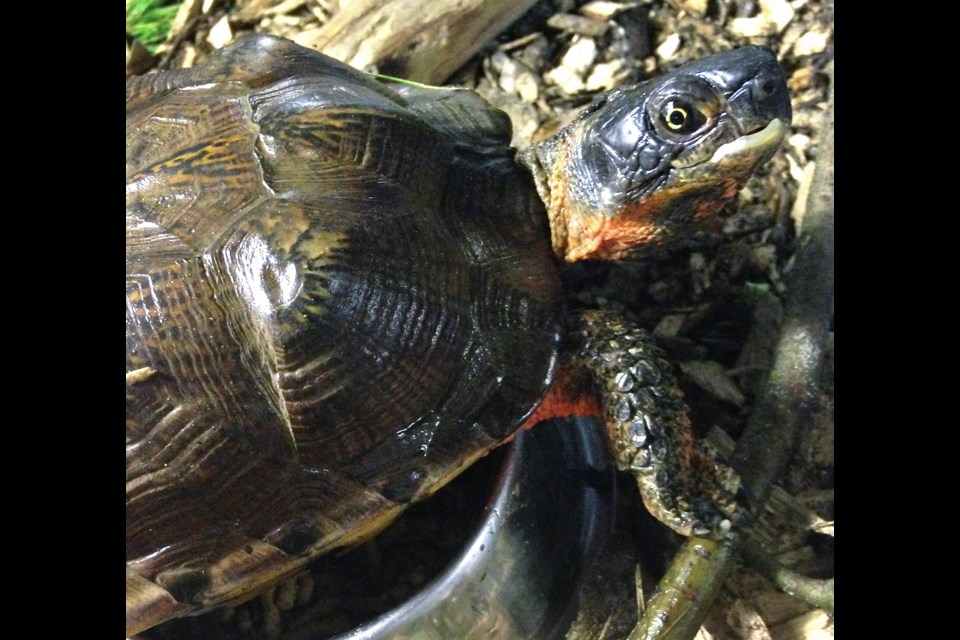Kate Bechmann produced a heck of a resumé when she went to sign up as a volunteer with the Wildlife Rescue Association last month.
The East Vancouver resident was on her way to the facility in Burnaby Lake Park when she came across a turtle in the middle of Glencairn Drive.
“You couldn’t get around him,” she told the NOW.
She got out of her vehicle, she said, and moved the turtle to a grassy area, “aiming him toward the lake.” But the animal seemed to be struggling, so Bechmann scooped it up and brought it along to the centre.
“I knew they could help him,” she said.
Turns out the reptile was a member of an endangered species, thousands of kilometres away from its natural habitat.
“What a way to start her volunteer career with us,” Wildlife Rescue communications coordinator Sam Smith said with a laugh.
Wildlife Rescue personnel quickly figured out the turtle, which boasts distinctive bright orange markings and a rough shell, wasn’t native to the area and sent it to reptile experts at Dewdney Animal Hospital in Maple Ridge.
They determined it was a wood turtle, a species that still lives in the wild in Southern Ontario and Quebec (as well as in isolated patches in Nova Scotia and New Brunswick) but faces “imminent extinction or extirpation,” according to Ontario’s ministry of natural resources and forestry.
“We suspect that this animal was picked up in the wild and kept in captivity until its owners got bored or dumped it,” Dewdney Animal Hospital veterinarian Dr. Adrian Walton said in a video about the turtle.
The clinic paid about $120 to ship the reptile via FedEx by way of a special shipper called Reptiles Express to the Speaking of Animals animal sanctuary in Severn, Ont.
Renamed “Burnaby,” the turtle is now being used to educate the public.
“He is now part of a travelling wildlife education centre,” owner-educator Krystal Hewitt told the NOW. “He’s going to be travelling all over the province … He’ll be doing our one-hour, interactive presentation and coming out for kind of a 10- to 15-minute spotlight on him, where we tell his story and talk about responsible pet ownership and wood turtles.”
Bechmann is delighted with the way rescue organizations mobilized to help the distressed turtle she found wandering far from home.
“I’m really happy that it turned out the way it did,” she said, “and I’m really amazed at the fantastic job they do.”
w Although wood turtles spend time in wooded areas, that’s not how they got their name. Wood turtles were so named because, as they age, their shells take on a wooden appearance.
About wood turtles:
- Moving at speeds of 0.32 kilometres per hour, wood turtles are among the fastest turtles on land.
- Wood turtles have an interesting hunting method; they stomp their feet on the ground to entice worms out of the soil.
- Wood turtles do not begin reproducing until they are at least 17 years old.
- Wood turtles as old as 46 years old have been found in Ontario.
- Wood turtles eat insects, slugs, snails, worms, plants, berries, and even fungi.
- Wood turtles are one of the few kinds of turtles that do not need to be under water to swallow their food.
- Wood turtles, like all reptiles, can’t regulate their own body temperatures. This is why you can spot turtles basking on logs and rocks on sunny days.



